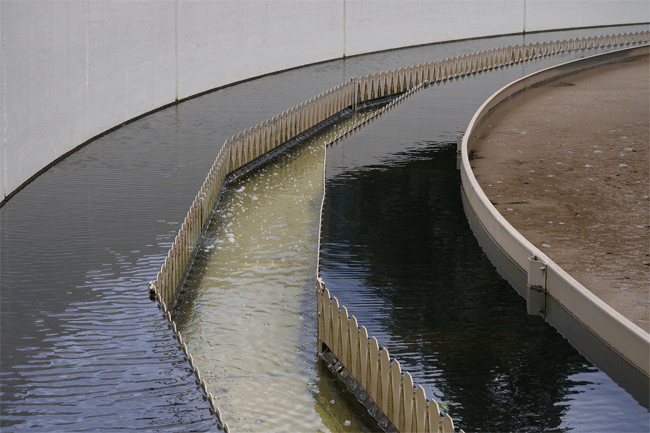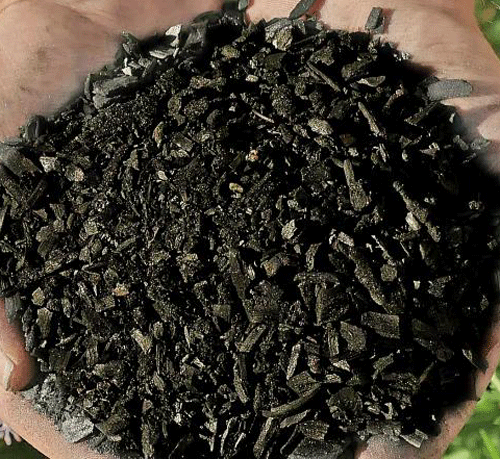[미국] 콜로라도대 연구진, ‘바이오숯’ 사용 수처리 프로젝트 착수
토마스 보치 교수 연구팀, ‘바이오숯’ 사용 도시 하·폐수 및 농업 배수 처리 연구 진행
미 에너지부 ‘물혁신 전국동맹’서 190만 달러 연구비 받아 하와이에 테스트베드 설치
매일 수천억 갤런의 귀중한 천연자원인 신선한 물이 농업용 관개, 에너지 추출 등에 사용된다. 인구가 증가하고 지구가 따뜻해지는 상황에서 깨끗한 물의 새로운 공급원에 대한 수요는 위기 수준이다.
콜로라도 주립대학교(Colorado State University ; CSU) 연구원들은 농업용지나 하·폐수 시설에서 나오는 하·폐수를 어떻게 처리하고 재사용하는 지, 그리고 그 물로부터 어떻게 귀중한 생필품을 추출할 수 있는지에 대한 책을 다시 쓸 수 있는 연구 프로젝트에 대한 청신호를 받았다. 그들의 목표는 전통적이지 않은 수원에 대한 새롭고 지속가능한 사용을 창조하고 농작물과 다른 필요를 위해 전통적인 담수에 대한 인류의 의존을 방해하는 것이다.

CSU 연구팀은 미국 에너지부의 ‘물혁신 전국동맹(National Alliance for Water Innovation)’으로부터 190만 달러의 연구보조금을 받았다. 이 네트워크는 도시 하·폐수, 해수, 농업 배수로와 같은 외부 상수원의 처리와 재사용 기술에 초점을 맞춘 1억1천만 달러의 다양한 기관 네트워크이다.
화학과 및 토목공학과에 동시에 임명된 토마스 보치(Thomas Borch) 토양과학과 교수는 CSU 연구팀을 이끌고 있으며 ‘물혁신 전국동맹’의 리더팀에서도 활동하고 있다.
■ 물 수요 감소(Reducing demand for water)
여러 기관의 연구원과 업계 파트너가 포함된 보치(Borch) 교수와 연구팀은 향후 2년 동안 스폰지와 유사한 화학 흡착제 역할을 하는 저렴한 비용의 환경친화적인 물질을 개발하고 테스트하여 특정 영양소(주로 인산염, 암모늄 및 질산염)를 도시 하·폐수 및 농업 배수에서 정확하게 제거하고 회수한다.
이들의 테스트베드(testbed)는 하와이 마우이섬(island of Maui)에서 워싱턴 소재 수처리 솔루션 회사인 워터텍토닉스(WaterTectonics)가 운영하는 하·폐수처리 시설이다. 워터텍토닉스의 짐 마더스보(Jim Mothersbaugh) CEO는 “이 프로젝트의 주요 연구 파트너 역할을 할 것이다”라고 말한다.
연구원들은 “성공적인 벤처기업의 이익은 다방면에 달한다”고 말한다. 하·폐수 처리와 재사용은 농업을 포함한 많은 분야에 걸쳐 담수에 대한 수요를 감소시킨다. 그 물에서 회수된 인산염과 다른 영양소들은 귀중하고 친환경적인 농업용 비료가 될 수 있다.
게다가, 그들의 작업은 전형적으로 하·폐수에 남겨진 인산염과 질산염의 수위를 전반적으로 감소시키고 결국 호수와 바다에 이르게 할 수 있다. 이 영양소들은 해로운 조류의 번식을 촉진하여 물고기와 수생식물을 포함한 섬세한 생태계를 파괴시킨다.
토마스 보치(Thomas Borch) 교수는 “우리가 이야기하고 있는 물의 양은 매우 크다”라면서고 “농업만 해도 전국의 모든 담수 취수량의 42% 이상을 책임지고 있다. 물의 처리와 재사용과 관련하여 진정으로 변화를 가져오려면 농업 또는 전력 부문에 초점을 맞출 필요가 있다”고 강조했다.

■ ‘바이오숯’이란 무엇인가?(What is biochar?)
연구진이 선택한 초기 흡착제 재료는 금속산화물과 생분해성 고분자를 더해 최적화하고 화학적으로 맞춤형 ‘바이오숯(biochar)’과 점토(clay)가 기능화된다. 일반적으로 토양 첨가물로 알려진 바이오숯은 탄소가 풍부한 바이오매스 감마(γ)로 나무, 밀짚, 옥수수 줄기 또는 분뇨)를 산소가 없는 환경에서 태워서 만든 숯과 같은 물질이다. 물에서 영양분을 정밀하게 분리하는 저비용 재료로서의 그것의 잠재력은 CSU 연구팀을 포함한 여러 과학자들에 의해 연구되고 있다.
연구팀은 이번 프로젝트를 위해 마우이 처리장(Maui treatment plant)의 바이오 고형물 폐기물(biosolids waste)을 바이오숯 흡수제 제조의 시작 재료로 활용할 계획이다. 신시내티 대학(University of Cincinnati)의 다른 연구진들은 찰흙을 흡수제로 최적화하는 작업을 할 계획이다.
콜로라도 주립대학교(CSU)의 토양 및 작물과학부 짐 이폴리토(Jim Ippolito) 부교수는 바이오숯 합성과 최적화에 대해 연구를 할 계획이다. 하수처리시설에서 생성된 바이오 고형물을 포함한 원료를 농경지 응용을 위한 가치 있고 영양분이 풍부한 제품으로 만드는 데 전문가인 이폴리토(Ippolito) 부교수는 ‘바이오숯(biochar)’ 제조와 흡수제 특성 미세 조정에 핵심 전문지식을 제공할 예정이다.
짐 이폴리토(Jim Ippolito) 부교수는 “우리의 제안의 주요 개념은 이 물에서 더 많은 양의 인(P)과 질소(N)를 선택적으로 제거할 수 있는 방법을 결정하는 것”이라면서 “물기둥에서 이 둘을 동시에 제거하는 것은 상대적으로 어렵다. 우리의 목표는 우리를 위해 제거 작업을 할 수 있는 새로운 물질을 만들면서도, 이러한 영양소를 비료 공급원으로 재사용할 수 있도록 그러한 방법으로 포착하는 것”이라고 말했다.
하와이 마우이 하수처리장에는 바이오 고형물을 바이오숯으로 전환하기 위한 건설 중인 열분해 장치가 있다.제조된 바이오숯 하·폐수의 영양 제거 스펀지로 사용하는 것이 그들의 목적이다. 이어 영양소가 가득한 바이오숯은 수요가 많은 마우이 섬에서 농업용에 활용될 예정이다. 바이오 고형물을 바이오숯으로 전환하면 바이오 고형물 관리비용이 절감되는 동시에 시설의 지속가능성 목표를 지원하고 탄소 발자국(carbon footprint)을 줄일 수 있다.
CSU 연구팀은 워터텍토닉스사(WaterTectonics) 및 처리장의 현지 운영자와 협력하여 바이오숯를 만들고, 화학 구조를 특성화하며, 처리장의 폐기물로부터 영양분을 회수할 수 있는 지속 가능한 솔루션을 개발한다는 계획이다.
토마스 보치(Thomas Borch) 교수는 “현재 진행 중인 작업에 직접 나서고 있지만 워터텍토닉스사가 영양소 선택적 제거를 위한 첨단 흡수제 개발을 담당할 것”이라고 말했다.
보치(Borch) 교수는 “이 프로젝트의 중요한 초점은 확장성과 경제성이며, 이것이 연구원들이 더 이국적이고 희귀한 재료보다 점토나 바이오숯과 같은 단순한 재료를 선택하는 이유이다”라면서 “이국적인 재료는 흡착제로 더 효과적일 수 있지만 비용이 엄청나게 많이 들고 학술적인 연습으로만 사용될 수 있다”고 말했다.
■ 기타 파트너(Other partners)
보조금에 대한 다른 파트너들은 국립 재생에너지연구소(National Renewable Energy Laboratory)의 연구원들이며, 그들은 환경영향 분석을 수행하고 연구팀이 다양한 물질과 더 전통적인 형태의 하·폐수 처리 및 재사용을 비교할 수 있도록 돕는다. 그 팀은 또한 환경보호국((Environmental Protection Agency))과 마노아(Manoa)에 있는 하와이대학(University of Hawaii)의 연구원들도 포함하고 있다.
그들의 독특한 바이오숯과 점토의 고해상도 분자 특성화를 수행하기 위해, 연구팀은 플로리다 주립대학교(Florida State University)의 국립 고자기장 연구소(National High Magnetic Field Laboratory), 로렌스 버클리 국립연구소(Lawrence Berkeley National Laboratory), 스탠포드 싱크로트론 방사선 광원(Stanford Synchrotron Radiation Lightsource)의 과학자들과도 협력할 계획이다.
[원문보기]
CSU researchers launch $1.9 million project for water treatment and reuse using biochar
Every day, hundreds of billions of gallons of a precious, dwindling natural resource, fresh water, is used for agricultural irrigation, energy extraction and more. The demand for novel sources of clean water, in the face of a growing population and a warming planet, is at crisis levels.
Colorado State University researchers have been given the green light on a research project that could rewrite the book on how spent water from agricultural fields or wastewater facilities are treated and reused, and how valuable commodities could be extracted from those waters. Their goal is to create new, sustainable uses for non-traditional water sources and to disrupt humanity’s reliance on traditional fresh water for crops and other needs.
The CSU team has received a $1.9 million grant from the U.S. Department of Energy’s National Alliance for Water Innovation, a $110 million, multi-institutional network of scientists focused on treatment and reuse technologies for outside-the-box water sources like municipal wastewater, seawater and agricultural drainage.
Thomas Borch, professor in the Department of Soil and Crop Sciences with joint appointments in chemistry and civil engineering, is leading the awarded CSU research team and also serves on the leadership team of the national alliance.
Reducing demand for water
Borch and the team, which includes researchers from several institutions and an industry partner, will be focused for the next two years on developing and testing low-cost, environmentally benign materials that function as chemical sorbents, similar to sponges, for the precise removal and recovery of certain nutrients ? mainly phosphate, ammonium and nitrate ? from municipal and agricultural wastewaters.
Their testbed will be a working wastewater treatment facility on the Hawaiian island of Maui operated by Washington-based water treatment solutions company WaterTectonics. WaterTectonics’ CEO, Jim Mothersbaugh, will serve as a key research partner in the project.
The benefits of a successful venture would be multi-faceted, the researchers say. Treatment and reuse of wastewater would reduce demand for fresh water across many sectors, including agriculture. The phosphates and other nutrients reclaimed from that water could become valuable, environmentally friendly fertilizers for agricultural fields.
What’s more, their work could lead to an overall reduction in the levels of phosphates and nitrates typically left in wastewater and that end up in lakes and oceans. These nutrients feed harmful algae blooms, disrupting delicate ecosystems including fish and aquatic plants.
“The volumes of water we are talking about are just huge,” Borch said. “Agriculture alone is responsible for more than 42% of all fresh water withdrawals in the country. If you want to really make a different with respect to treatment and reuse of water, you will need to focus on either the agriculture or the power sectors.”
What is biochar?
The researchers’ starting sorbent materials of choice will be optimized and chemically tailored biochar and clay, which will be functionalized by the addition of metal oxides and biodegradable polymers. Biochar, commonly known as a soil additive, is a charcoal-like material created by burning carbon-rich biomass ? usually wood, wheat straw, corn stalks or manure ? in an oxygen-free environment. Its potential as a low-cost material for precision-separation of nutrients from water is being explored by multiple scientists, including the CSU team.
For this project, the team plans to use biosolids waste from the Maui treatment plant as their starting material for making their biochar sorbents. Other members of the research team from University of Cincinnati will work on optimizing clay as a sorbent material.
Jim Ippolito, CSU associate professor in the Department of Soil and Crop Sciences, will work on biochar synthesis and optimization. An expert in turning raw materials ? including biosolids generated from sewage treatment facilities ? into valuable, nutrient-rich products for agricultural land application, Ippolito will provide key expertise in both making the biochar and fine-tuning its sorbent properties.
“The main concept with our proposal is to determine a means by which we can selectively remove even greater amounts of phosphorus and nitrogen from this water,” Ippolito said. “It’s relatively difficult to remove both of these simultaneously from the water column. Our goal is to create novel materials to do the removal for us, yet capture these nutrients in such a way so they can be reused as a fertilizer source.”
The Maui plant has a pyrolysis unit under construction for the conversion of biosolids to biochar. Their intent is to use the manufactured biochar as a nutrient removal sponge for the wastewater. The nutrient-loaded biochar will then be used for agricultural applications in Maui, for which there is high demand. Conversion of municipal biosolids to biochar will reduce the cost of biosolids management while also assisting the facility’s sustainability goals and reducing its carbon footprint.
The CSU team will work with WaterTectonics and the local operator of the plant to make the biochar, characterize its chemical structure, and develop a sustainable solution for the recovery of nutrients from the plant’s waste.
“We are tapping directly into work that is ongoing, but will be responsible for development of advanced sorbent materials for selective removal of nutrients with WaterTectonics,” Borch said.
A critical focus of the project is scalability and economic viability, which is why the researchers are choosing simpler materials like clay and biochar, rather than more exotic, rare materials. “Exotic materials might work better as sorbents, but they would be prohibitively expensive and serve only as an academic exercise,” Borch said.
Other partners
Other partners on the grant are researchers at the National Renewable Energy Laboratory who will conduct environmental impact analysis and help the team compare varied materials with more traditional forms of wastewater treatment and reuse. The team also includes researchers from the Environmental Protection Agency and the University of Hawaii at Manoa.
To perform high-resolution molecular characterization of their unique biochars and clays, the team will also partner with scientists at the National High Magnetic Field Laboratory at Florida State University, the Lawrence Berkeley National Laboratory, and the Stanford Synchrotron Radiation Lightsource.
[출처=콜로라도주립대학교(CSU researchers launch $1.9 million project for water treatment and reuse using biochar (colostate.edu)) / 2021년 12월 28일자 보도자료]

